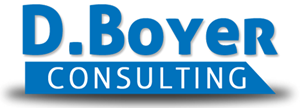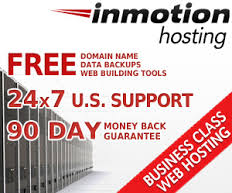Business is mostly conducted via email or phone communications.
Office hours 10:00 a.m. to 6:00 p.m, Mon. - Thurs., and 10:00 a.m. to 2:00 p.m. on Fridays.
SEND EMAIL INQUIRIES DIRECTLY TO:
Dawn.Boyer@me.com
Business is mostly conducted via email or phone communications.
Office hours 10:00 a.m. to 6:00 p.m, Mon. - Thurs., and 10:00 a.m. to 2:00 p.m. on Fridays.
SEND EMAIL INQUIRIES DIRECTLY TO:
Dawn.Boyer@me.com
Business is mostly conducted via email or phone communications.
Office hours 10:00 a.m. to 6:00 p.m, Mon. - Thurs., and 10:00 a.m. to 2:00 p.m. on Fridays.
SEND EMAIL INQUIRIES DIRECTLY TO:
Dawn.Boyer@me.com
Why should you self-publish?
June 13th, 2015 by Dawn Boyer
Why you should self-publish …
The revolution has begun. In 2008, for the first time in history, more books were self-published than those published traditionally. In 2009, 76% of all books released were self-published, while publishing houses drastically reduced the number of books they produced. Those considering getting published for the first time may use a 3rd-party publisher (vanity publisher) who charges thousands of dollars to the author to get the book edited, formatted, ISBN numbers obtained, covers designed and, all the files loaded to the printer’s platform. I have author friends who have been sucked into contracts costing them as much as $8,000! In many cases vanity publishers ‘own’ the copyrights of the author’s books and authors may have to purchase their own book’s copyrights to move to a different publishing house.
A comparison of third party printing companies notes the following price comparisons. Lulu can cost an author over $3,000 for publication of a hard-cover, full-color book, but doesn’t offer editing, and markets the book through their website “and online retailers.” Winepress Publishing can get you into a paperback book for about $2,800 and they do offer ‘screening’ of the manuscript (for editing), but artificially inflate the book prices to provide higher royalties to the authors. WingSpan and AuthorHouse publish books for about $900 (full-color, hard-cover), but offers no manuscript editing. If the publisher doesn’t have a service in the publishing price, they may offer it, but at inflated prices. If the publishing house states a specific ‘locked percentage’ royalty, then they are continuing to earn money off the author (and book sales) by forcing the sales through the publisher’s accounting system. Many vanity publishing houses also charge for ‘turning on multiple sales funnels’ – which means they toggle a few buttons on the printer’s platform – and charge up to $1,000 to perform five seconds of work.
For those interested in self-publishing, it is best to sub-contract pieces and parts of the manuscript process for editing or cover design. Or, hire a consultant who can do it all for you with a contract that entitles the author to 100% of the copyright and 100% control of the book before, during, and after the publishing experience. The consultant can also set up your printer’s account, load the files, and place the book on the publishing platform – including the sales funnels for all online sales and book catalog sales outlets. The consultant should be able to provide you a package price deal, which includes turning on the sales funnels.
Let’s assume the author has already has the book edited to the perfect formatting and writing style. This includes programmed indents for paragraphs (versus tabs for the first line) and perfect margins, chapter headings, spell check and grammar check resulting in a perfect manuscript. The manuscript conversion process is technical and requires computer literacy and an intricate knowledge of computer word processing, file conversions, and if photos are to be added, then knowledge of dots per inch and inserting the files. You do want a specialist who has done this process multiple times.
YOUR MARKETING TOOL …
What is the most important thing that most self-published authors leave out of their books? A full-bore marketing spiel about themselves! They are mistaking the content as the most important feature about the book. The content is not the functional reason for publishing the book. The point of contact information to lead potential new clients back to the source so the author can sell them something else – that is the most important reason for the book!
Authors should include their resume (or curriculum vitae if academics), and a “About the Author” page which showcases their primary skills, accomplishments, and provides the readers with a ‘call-to-action’ task (e.g., buy more of my products or call me for an appointment), provide a loaded list of social media links for readers to follow (e.g., Facebook, LinkedIn, Twitter, YouTube; with accompanying QR codes), and hot-links to their other books (on Amazon) or their business website. If the book is a paperback, the QR codes allow reader’s to use mobile devices to scan straight to a product or service the author sells. If the book is a digital publication (Kindle, Nook), a hot-link can take the reader straight to the Internet site and the author’s shopping cart.
The self-published book is a great way to market your skills or products, or perform business development for a company, by engaging the reader, but getting them excited about the author’s products or services. Use a book as a marketing tool, not just an information vehicle. Then watch your book sales soar and more sales calls for your expertise coming into your business.
Contact Dr. Boyer today for options to self-publish your book!
Dawn D. Boyer, Ph.D., owner of D. Boyer Consulting – provides resume writing, social media management and training, business development, and print-on-demand author coaching and consulting. Reach her at: Dawn.Boyer@DBoyerConsulting.com or call (757) 404-8300.
Why should you self-publish?
June 13th, 2015 by Dawn Boyer
Why you should self-publish …
The revolution has begun. In 2008, for the first time in history, more books were self-published than those published traditionally. In 2009, 76% of all books released were self-published, while publishing houses drastically reduced the number of books they produced. Those considering getting published for the first time may use a 3rd-party publisher (vanity publisher) who charges thousands of dollars to the author to get the book edited, formatted, ISBN numbers obtained, covers designed and, all the files loaded to the printer’s platform. I have author friends who have been sucked into contracts costing them as much as $8,000! In many cases vanity publishers ‘own’ the copyrights of the author’s books and authors may have to purchase their own book’s copyrights to move to a different publishing house.
A comparison of third party printing companies notes the following price comparisons. Lulu can cost an author over $3,000 for publication of a hard-cover, full-color book, but doesn’t offer editing, and markets the book through their website “and online retailers.” Winepress Publishing can get you into a paperback book for about $2,800 and they do offer ‘screening’ of the manuscript (for editing), but artificially inflate the book prices to provide higher royalties to the authors. WingSpan and AuthorHouse publish books for about $900 (full-color, hard-cover), but offers no manuscript editing. If the publisher doesn’t have a service in the publishing price, they may offer it, but at inflated prices. If the publishing house states a specific ‘locked percentage’ royalty, then they are continuing to earn money off the author (and book sales) by forcing the sales through the publisher’s accounting system. Many vanity publishing houses also charge for ‘turning on multiple sales funnels’ – which means they toggle a few buttons on the printer’s platform – and charge up to $1,000 to perform five seconds of work.
For those interested in self-publishing, it is best to sub-contract pieces and parts of the manuscript process for editing or cover design. Or, hire a consultant who can do it all for you with a contract that entitles the author to 100% of the copyright and 100% control of the book before, during, and after the publishing experience. The consultant can also set up your printer’s account, load the files, and place the book on the publishing platform – including the sales funnels for all online sales and book catalog sales outlets. The consultant should be able to provide you a package price deal, which includes turning on the sales funnels.
Let’s assume the author has already has the book edited to the perfect formatting and writing style. This includes programmed indents for paragraphs (versus tabs for the first line) and perfect margins, chapter headings, spell check and grammar check resulting in a perfect manuscript. The manuscript conversion process is technical and requires computer literacy and an intricate knowledge of computer word processing, file conversions, and if photos are to be added, then knowledge of dots per inch and inserting the files. You do want a specialist who has done this process multiple times.
YOUR MARKETING TOOL …
What is the most important thing that most self-published authors leave out of their books? A full-bore marketing spiel about themselves! They are mistaking the content as the most important feature about the book. The content is not the functional reason for publishing the book. The point of contact information to lead potential new clients back to the source so the author can sell them something else – that is the most important reason for the book!
Authors should include their resume (or curriculum vitae if academics), and a “About the Author” page which showcases their primary skills, accomplishments, and provides the readers with a ‘call-to-action’ task (e.g., buy more of my products or call me for an appointment), provide a loaded list of social media links for readers to follow (e.g., Facebook, LinkedIn, Twitter, YouTube; with accompanying QR codes), and hot-links to their other books (on Amazon) or their business website. If the book is a paperback, the QR codes allow reader’s to use mobile devices to scan straight to a product or service the author sells. If the book is a digital publication (Kindle, Nook), a hot-link can take the reader straight to the Internet site and the author’s shopping cart.
The self-published book is a great way to market your skills or products, or perform business development for a company, by engaging the reader, but getting them excited about the author’s products or services. Use a book as a marketing tool, not just an information vehicle. Then watch your book sales soar and more sales calls for your expertise coming into your business.
Contact Dr. Boyer today for options to self-publish your book!
Dawn D. Boyer, Ph.D., owner of D. Boyer Consulting – provides resume writing, social media management and training, business development, and print-on-demand author coaching and consulting. Reach her at: Dawn.Boyer@DBoyerConsulting.com or call (757) 404-8300.











